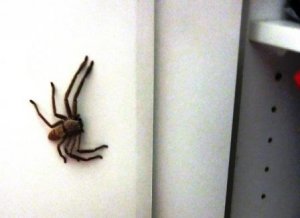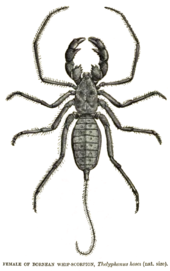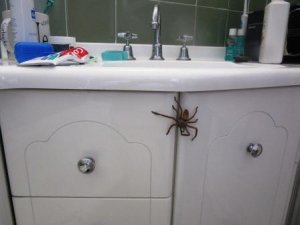Warrigal
SF VIP
- Location
- Sydney, Australia
We've just had a couple of days of over 100oF in Sydney and it has caused a number of home invasions by little creatures wanting to escape the heat.
Emily the Huntsman Spider is one such asylum seeker.
I found her this morning taking refuge in my bedroom closet.

To get in there she has had to squeeze through the narrowest of gaps.
Emily the Huntsman Spider is one such asylum seeker.
I found her this morning taking refuge in my bedroom closet.

To get in there she has had to squeeze through the narrowest of gaps.






